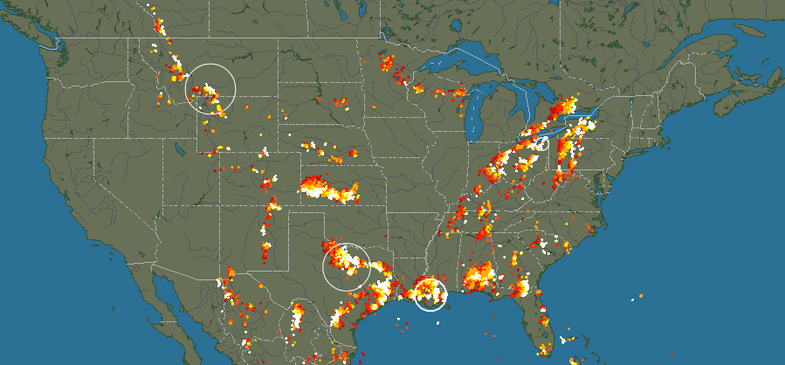Listen To Lightning Strikes Live On This Citizen-Scientist Map
Then make your own detector to contribute to the map!

If you visit Blitzortung.org, you’ll hear an irregular succession of snaps or pops. Each little zap represents a lightning strike occurring somewhere in the land you see on the map. The strikes are captured by a network of citizen detectors, then sent, with just a few seconds’ delay, to the site.
Here’s what’s even cooler. If you want to contribute measurements to the map, you can. You’ll need to buy parts from Blitzortung.org and assemble your own detector. The project has detailed instructions here. The project managers, who seem to be three guys in Germany, estimate the overall cost to make a detector is less than 200 euro (about $270).
The Blitzortung instructions will have you make a detector that picks up long-length, low-frequency radio waves that lightning generates. The lightning-radio frequencies are much lower than the frequencies used for the radio you listen to in your car; they range from 3 kHz to 30 kHz, when AM radio broadcasts at frequencies between 540 kHz to 1.6 MHz. These low-frequency waves are able to propagate for quite a distance, bouncing between the surface of the Earth and the Earth’s ionosphere. So even if you don’t live in an area with frequent lightning storms, your detector may still provide useable data to the project. A large antenna used in a location with little electromagnetic activity may detect lightning strikes as far as 3,000 kilometers (about 1,900 miles) away, according to the project instructions.

Once your detector is up and running, it will send its data to the Blitzortung.org servers. The servers calculate how far away a lightning strike is from a detector, based on the data the detector picks up. A lightning strike needs to trigger at least four detectors for Blitzortung to be able to calculate its position. The more detectors there are in an area, the more accurate lighting-strike captures for that area will be.
Exactly how accurate is this volunteer network of lightning detectors? The project doesn’t have a lot of direct data measuring this, but the data it does present are promising. The locations it calculates for lighting strikes in Germany, where the project started, are comparable to calculations made by this commercial system. Project managers have also found that around buildings that are frequently struck by lightning, they tend to get data points within a kilometer of the building. Accuracies may be lower in areas where the project is less popular and there are fewer volunteer detectors.